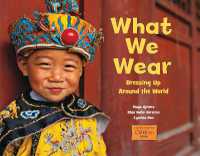Full Description
Maps play an indispensable role in indigenous peoples' efforts to secure land rights in the Americas and beyond. Yet indigenous peoples did not invent participatory mapping techniques on their own; they appropriated them from techniques developed for colonial rule and counterinsurgency campaigns, and refined by anthropologists and geographers. Through a series of historical and contemporary examples from Nicaragua, Canada, and Mexico, this book explores the tension between military applications of participatory mapping and its use for political mobilization and advocacy. The authors analyze the emergence of indigenous territories as spaces defined by a collective way of life--and as a particular kind of battleground.
Contents
List of Figures
A Narrative Table of Contents
1. In the Rincón of the Sierra Juárez
2. The Decline and Fall of the Once August American Geographical Society
3. "Red Mike" Edson's U.S. Marine Patrols Up Nicaragua's Río Coco in 1928-1929 and the Development of the Small Wars Manual
4. The Birth of Indigenous Mapping In Canada
5. Maps, Guns, and Indigenous Peoples
6. From Territory to Property: Indigenous Mapping after the Cold War
7. Counterinsurgency and the Rise of the "Warrior Scholars"
8. The AGS, the Bowman Expeditions, and the México Indígena Project
Coda: Kill the Insurgent, Save the Man—Indigenous Peoples and Human Terrain
A Note on Maps
Notes
Bibliography
Index








